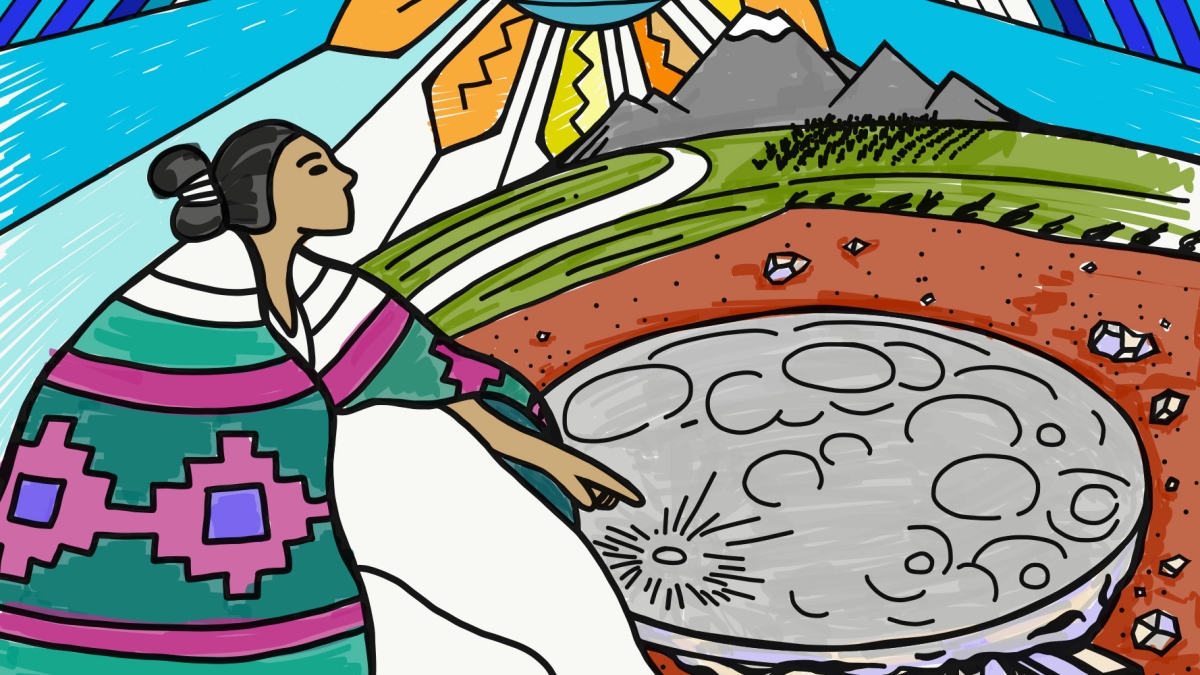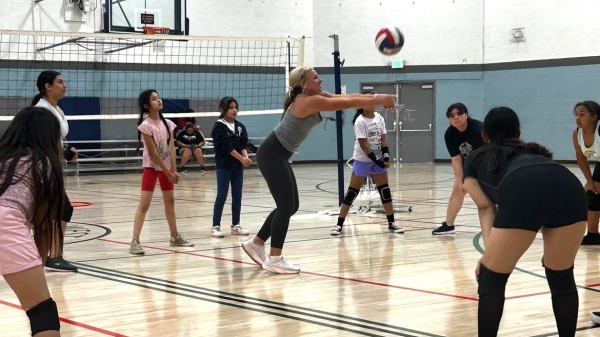ASU Art Museum explores light as a medium and source of energy
Free coloring book, available now, shares Native American stories of light

The ASU Art Museum is exploring light as an artistic medium in several ways this semester.
“Traditional Stories of Light” is a new all-ages coloring book that’s available for free at the ASU Art Museum or to download. The project is a collaboration of the museum and three Native American artists: Vanessa Moreno, who is Purépecha and Tepehuán, designed the book, which was illustratrated by Eunique Yazzie, who is Navajo, and Dustin Lopez, who is Navajo, Yacqui and Laguna Pueblo.
Artist Leo Villareal will debut a work in mid-November that uses technology to harness light and is unique to the ASU Art Museum.
And on Dec. 22, the ASU Art Museum will hold a “Sunrise Light Walk,” a guided walk that explores features on the Tempe campus using the four cardinal directions as a guide.
These projects exploring light are in addition to ASU’s ongoing relationship with James Turrell, a renowned artist who is creating a masterpiece of light at Roden Crater, a large-scale installation in northern Arizona. Turrell has created several smaller scale works that also manipulate the viewer’s sense of light, and one of those, “Air Apparent,” is on ASU’s Tempe campus.
The use of light in art goes back centuries, according to Miki Garcia, director of the museum.
“The notion of light as it refers to the heavens or God or transcendence, and, within individual cultures, light as a source of energy and life has a deep, rich history,” she said.
Turrell has shaped his Roden Crater installation, inside a volcanic cinder cone, to become a natural camera obscura.
“In his work, he sees light as a material the way you would see oil or pastel or bronze – as a material you can shape to experience different visual and body sensations,” Garcia said.
Villareal works with light from a technology perspective, using LED bulbs and computer programming to create illuminations. For the new work, debuting in mid-November, Villareal did three-dimensional mapping of the ASU Art Museum building and used the data to create an active light work that will be specific to the museum.
The “Native Stories of Light” project was an intentional effort to expand the consideration of light beyond the work of Turrell and Villareal, Garcia said.
“We’re making a very concerted effort to make sure that all of our programming is considering our place in Arizona,” she said.
“We’re not just ‘Any Museum USA.’ We’re in a site that is on Tohono O’odham land. So this is an example of how we’re trying to move the museum toward a more open and inclusive and accessible space so we can be a museum for all.”
Yazzie, one of the coloring book illustrators, has long incorporated light as a medium. She uses metallic paper to create floor-to-ceiling installations that shimmer.
“I do artwork that’s reflective and has some sort of iridescence to it. It’s like I’m weaving light,” she said.
“The coloring book is a different take on how light can be introduced by either traditional stories or by having an Indigenous narrative.”
Yazzie and Lopez had heard their own communities’ traditional stories, but they also researched other narratives.
“In Arizona, there are a ton of stories we can choose from, but I don’t know all the traditional stories for all 24 tribes in Arizona,” she said.
“We were thinking about sources of light – fire, the stars, sun and moon. Those are symbols we looked for in other narratives, and a lot of those symbols are in every tribal creation story, which we call emergence.”
Yazzie said that Lopez contacted traditional storytellers in different tribes and the artists learned the most appropriate ways to create the book, for example, by using only parts of stories.
“For traditional stories like the ones illustrated in the coloring book, some of them are not within the time frame to be telling the story. For most tribal nations, the story time is during the winter,” she said. “The first frost is when you can begin telling your cultural stories.
“We learned the background and the cultural significance and how we could reproduce it in the best way without stepping on traditional belief systems,” said Yazzie, who also recorded voice-overs for an app that will be available to accompany the sunrise walk on Dec. 22.
On Oct. 25 at 10 a.m. Yazzie and Moreno will participate in a Zoom conversation with Kathryn Medill, the audience experience coordinator for the museum.
In the spring 2021 semester, Marc Neveu, head of the architecture program in The Design School at ASU, will teach an iCourse titled, “Turrell and Roden Crater: Art, Design and Tech.” The course has no prerequisites and is open to anyone.
Top image: A portion of the cover image from “Traditional Stories of Light,” a coloring book designed by Vanessa Moreno and illustrated by Eunique Yazzie and Dustin Lopez, in collaboration with the ASU Art Museum.
More Arts, humanities and education

ASU Gammage program brings the arts to incarcerated women
Laughter might not be the first thing you expect to hear when arriving at Maricopa County Estrella Jail, the all-women prison facility in south Phoenix. But it was there on a recent afternoon, down…

Maryvale girls gain confidence through volleyball program
Life as a teen or tween can be tough, particularly for girls. That's why an Arizona State University partnership with a community center in West Phoenix is building confidence in girls through…

ASU double major plans to use Japanese studies in her business career
Editor’s note: This story is part of a series of profiles of notable spring 2024 graduates. Racine Merritt is a business-minded, ambitious go-getter through and through, beginning with earning two…